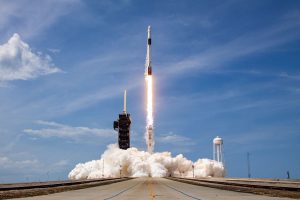While the observation of the world beyond the skies has always fascinated Humans it also happens to predate history. Still, the development of liquid-fuelled rocket engines in the past century has made it practically possible for us to delve into space exploration. Since its inception in the 1950s Space exploration has often been used as a proxy competition for geopolitical rivalries of technologically advanced nations. The early era of space exploration was driven by a “Space Race” between the Soviet Union and the United States; the launch of the first man-made object to orbit the Earth was the USSR’s Sputnik 1, on October 4, 1957, and the first Moon landing by the American Apollo 11 craft on July 20, 1969, are often taken as the boundaries for this initial period. India has also come into the picture in recent years with its landmark achievements of Mangalyan and Chandrayaan programs. Our understanding of space has evolved over the years and we have achieved incredible feats and continue to do so. Recently this catalog of achievements was taken a step further when NASA and SpaceX joined hands-on sending American astronauts to the International Space Station (ISS).
This was a different venture from what had taken place before, NASA astronauts were launched from the Kennedy space center in a commercially built and operated spacecraft called the Crew Dragon powered by the Falcon 9 rocket both build by Space X, a company founded by billionaire entrepreneur Elon Musk. This mission marks the first human spaceflight with private collaboration. Although Space X spacecrafts have previously been used to resupply the International Space Station (ISS). The SpaceX Crew Dragon spacecraft carried NASA astronauts Robert Behnken and Douglas Hurley to the International Space Station. It was launched on Saturday, May 30 at 3:22 p.m. EDT. NASA called this mission DEMO-2 as this was only a test flight which if successful will lead to many more missions in collaboration with SpaceX. This mission was also used to validate end to end SpaceX crew transportation system, including launch, in-orbit, docking, and landing operations. So if there were no technological advancements in this mission why did this mission initiate so much talk? It was because it was NASA’s first crewed US spacecraft in nearly a decade. Nasa owned five spaceships under its Space Shuttle program Challenger, Columbia Discovery, Atlantis, and Endeavour. The first two were destroyed in accidents, Indian born astronaut Kalpana Chawla was aboard the Columbia in 2003 when it crashed. Discovery, Atlantis, and Endeavour were decommissioned and retired in 2011 even though they had a few rounds in them. It was mutually decided NASA had other prioritize and it no longer made sense to fund more spacecraft’s when other private players were boasting of making space travel capable shuttles. Therefore, NASA started its collaboration with Russia for its spacecraft’s which cost millions of dollars hence SpaceX gave an alternative to provide homemade spacecraft’s which will also be cheaper for NASA.
Elon Musk was quoted saying “This is a dream come true for me and everyone at SpaceX,” Hence this was flight was the result of many years of hard work for Private players to enter this market and commercially be an option to build and operate services to outer space. Elon Musk owns another technologically advanced company called Tesla in the automobile industry. Elon Musk has also claimed that his company will soon be able to give passenger rides to anyone who wishes to do a space journey and is willing to spend lots of money on it. Many private companies like Virgin Galactic and Boeing have also come into the foreplay contributing so much to this shared space. Space agencies from different countries in recent years have not only been sharing data and resources but also have been doing joint missions. We can see this as more than 10 countries are working on the next International Space station. And with the help of private companies, we can expect more advancement in this sector as they are expected to bring in fresh investments, and also technological innovation. In India too, the Indian Space Research Organisation (ISRO), is building and fabricating the components that go into making rockets and satellites. Several private companies have started making satellites for their use, or their clients. Though there is a long way to go for India to gain supremacy in deep space exploration. Though it is simply amazing at what the NASA and SpaceX teams have accomplished together there is a strong need to do more deep space exploration and conduct other missions as we humans venture into outer space.









